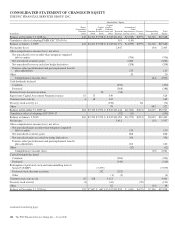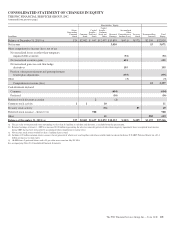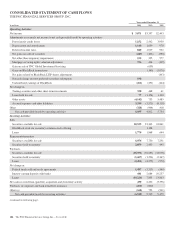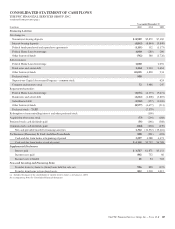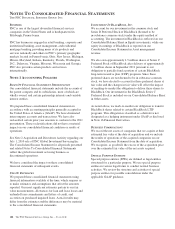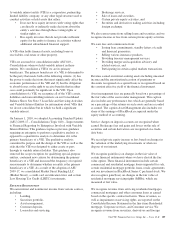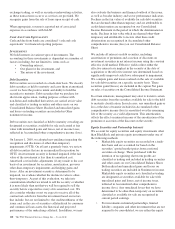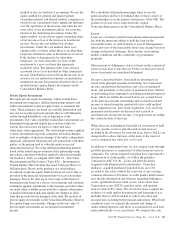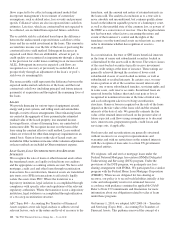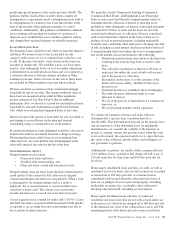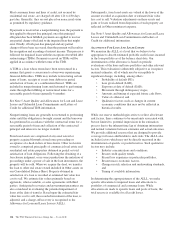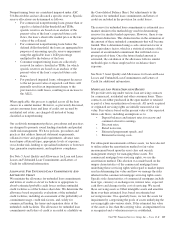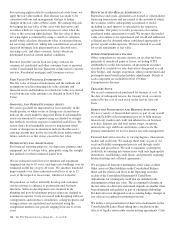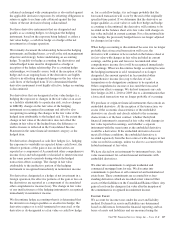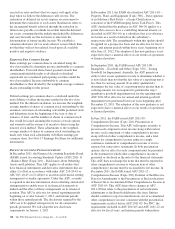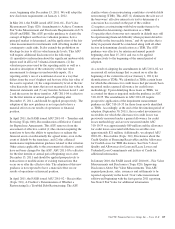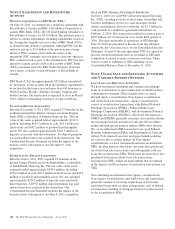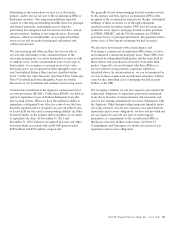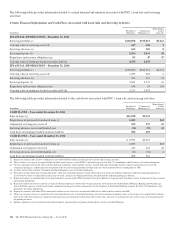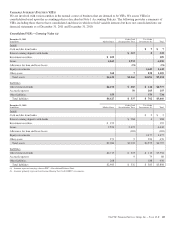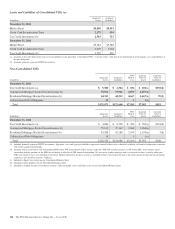PNC Bank 2011 Annual Report Download - page 123
Download and view the complete annual report
Please find page 123 of the 2011 PNC Bank annual report below. You can navigate through the pages in the report by either clicking on the pages listed below, or by using the keyword search tool below to find specific information within the annual report.Most consumer loans and lines of credit, not secured by
residential real estate, are charged off after 120 to 180 days
past due. Generally, they are not placed on nonaccrual status
as permitted by regulatory guidance.
If payment is received on a nonperforming loan, the payment is
first applied to the past due principal; once this principal
obligation has been fulfilled, payments are applied to recover
any partial charge-off related to the impaired loan that might
exist. Finally, if both past due principal and any partial
charge-off have been recovered, then the payment will result in
the recognition and recording of interest income. This process is
followed for impaired loans with the exception of troubled debt
restructurings (TDRs). Payments received on TDRs will be
applied in accordance with the terms of the TDR.
A TDR is a loan whose terms have been restructured in a
manner that grants a concession to a borrower experiencing
financial difficulties. TDRs may include restructuring certain
terms of loans, receipts of assets from debtors in partial
satisfaction of loans, or a combination thereof. TDRs are
included in nonperforming loans until returned to performing
status through the fulfilling of restructured terms for a
reasonable period of time (generally 6 months).
See Note 5 Asset Quality and Allowances for Loan and Lease
Losses and Unfunded Loan Commitments and Letters of
Credit for additional TDR information.
Nonperforming loans are generally not returned to performing
status until the obligation is brought current and the borrower
has performed in accordance with the contractual terms for a
reasonable period of time and collection of the contractual
principal and interest is no longer in doubt.
Foreclosed assets are comprised of any asset seized or
property acquired through a foreclosure proceeding or
acceptance of a deed-in-lieu of foreclosure. Other real estate
owned is comprised principally of commercial real estate and
residential real estate properties obtained in partial or total
satisfaction of loan obligations. Following the obtaining of a
foreclosure judgment, or in some jurisdictions the initiation of
proceedings under a power of sale in the loan instruments, the
property will be sold. When we acquire the deed, we transfer
the loan to other real estate owned included in Other assets on
our Consolidated Balance Sheet. Property obtained in
satisfaction of a loan is recorded at estimated fair value less
cost to sell. We estimate fair values primarily based on
appraisals, when available, or sales agreements with third
parties. Anticipated recoveries and government guarantees are
also considered in evaluating the potential impairment of
loans at the date of transfer. Based upon the estimated fair
value less cost to sell, the recorded investment of the loan, is
adjusted, and a charge-off/recovery is recognized to the
Allowance for Loan and Lease Losses (ALLL).
Subsequently, foreclosed assets are valued at the lower of the
amount recorded at acquisition date or estimated fair value
less cost to sell. Valuation adjustments on these assets and
gains or losses realized from disposition of such property are
reflected in Other noninterest expense.
See Note 5 Asset Quality and Allowances for Loan and Lease
Losses and Unfunded Loan Commitments and Letters of
Credit for additional information.
A
LLOWANCE
F
OR
L
OAN
A
ND
L
EASE
L
OSSES
We maintain the ALLL at a level that we believe to be
appropriate to absorb estimated probable credit losses incurred
in the loan portfolio as of the balance sheet date. Our
determination of the allowance is based on periodic
evaluations of the loan and lease portfolios and other relevant
factors. This evaluation is inherently subjective as it requires
material estimates, all of which may be susceptible to
significant change, including, among others:
• Probability of default (PD),
• Loss given default (LGD),
• Exposure at date of default (EAD),
• Movement through delinquency stages,
• Amounts and timing of expected future cash flows,
• Value of collateral, and
• Qualitative factors such as changes in current
economic conditions that may not be reflected in
historical results.
While our reserve methodologies strive to reflect all relevant
risk factors, there continues to be uncertainty associated with,
but not limited to, potential imprecision in the estimation
process due to the inherent time lag of obtaining information
and normal variations between estimates and actual outcomes.
We provide additional reserves that are designed to provide
coverage for losses attributable to such risks. The ALLL also
includes factors which may not be directly measured in the
determination of specific or pooled reserves. Such qualitative
factors may include:
• Industry concentrations and conditions,
• Recent credit quality trends,
• Recent loss experience in particular portfolios,
• Recent macro economic factors,
• Changes in risk selection and underwriting standards,
and
• Timing of available information.
In determining the appropriateness of the ALLL, we make
specific allocations to impaired loans and allocations to
portfolios of commercial and consumer loans. While
allocations are made to specific loans and pools of loans, the
total reserve is available for all credit losses.
114 The PNC Financial Services Group, Inc. – Form 10-K


